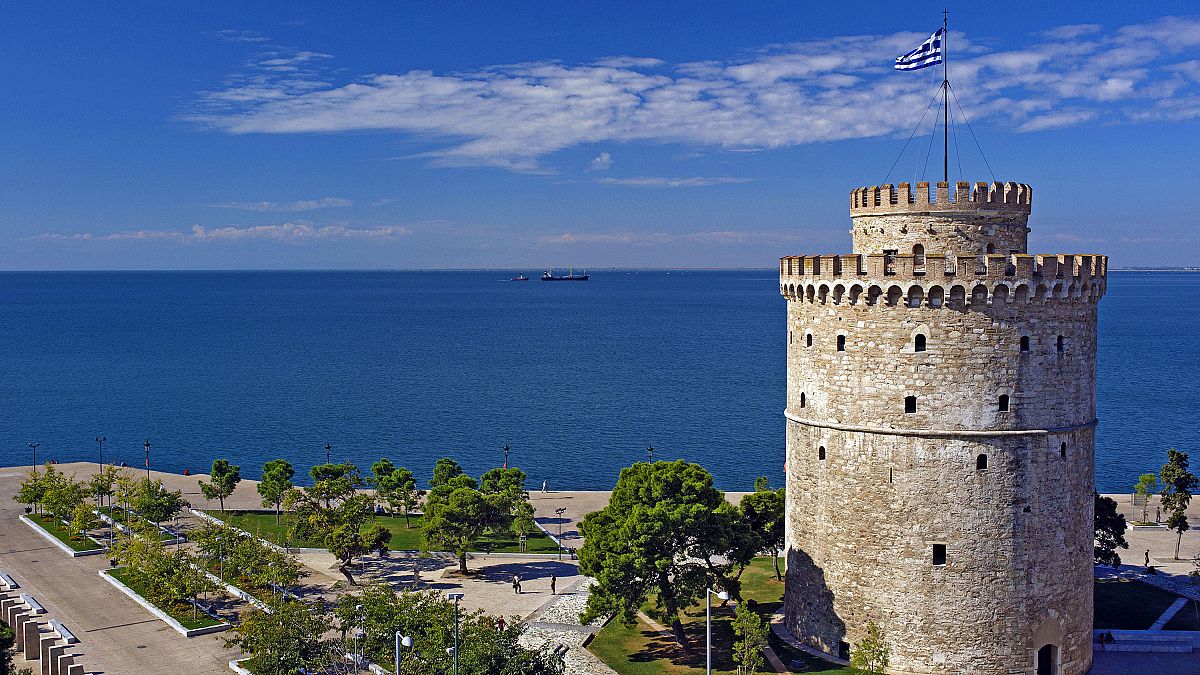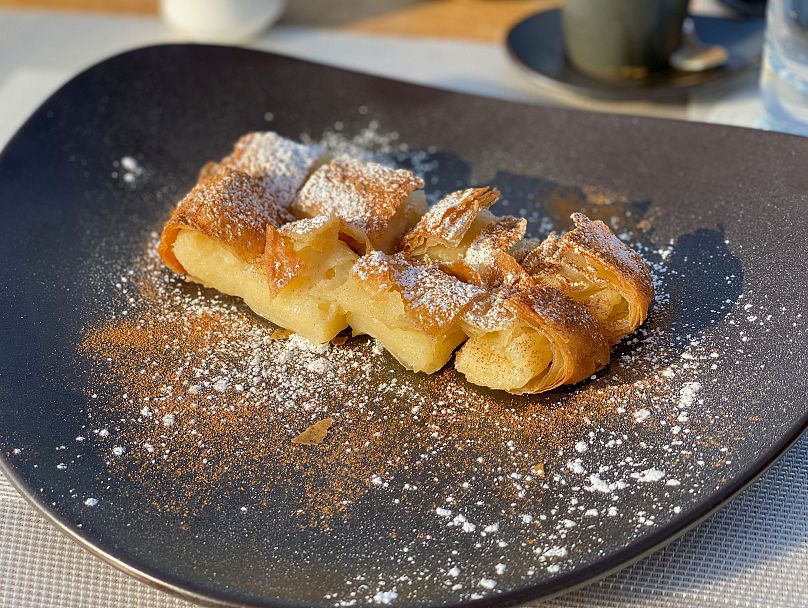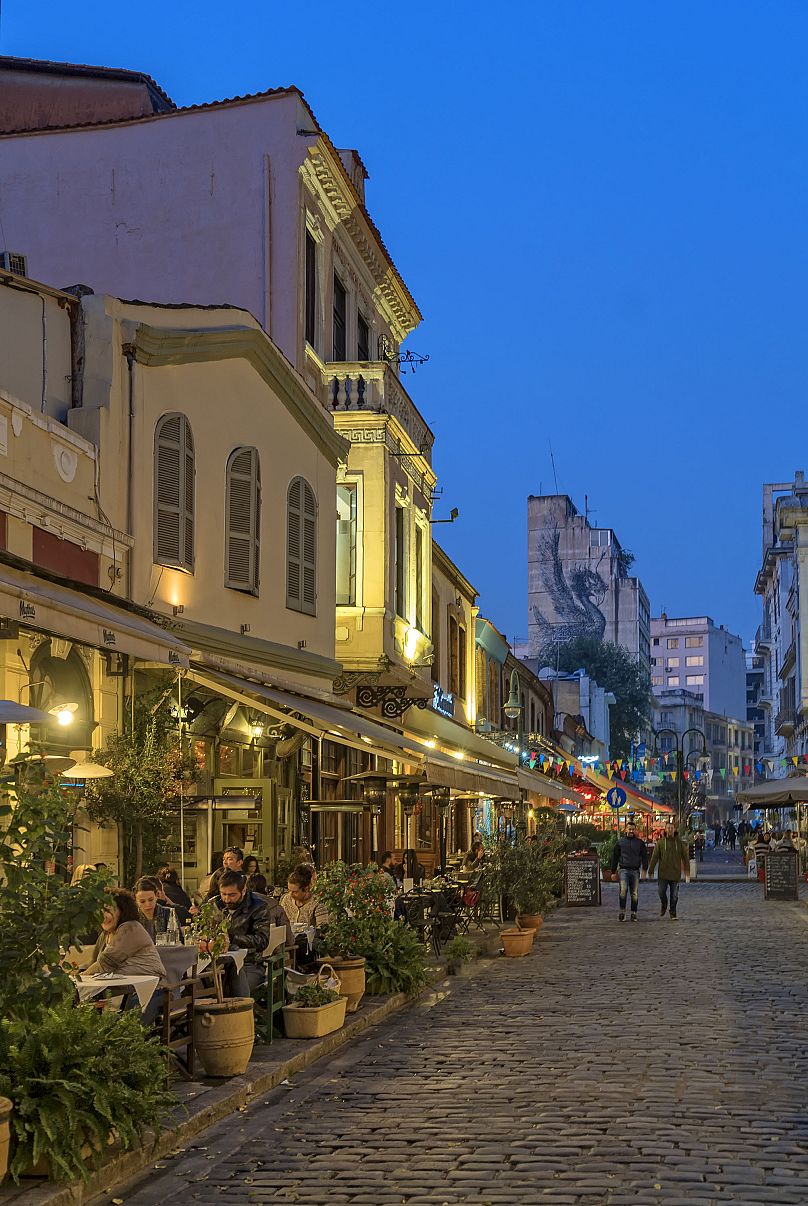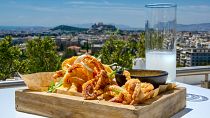Sitting at the crossroads of east and west, Greece’s second city is a patchwork of influences, dotted with Byzantine churches, Roman remains, Ottoman-influenced pastry shops and Jewish monuments.
Bordered by the turquoise waters of the Aegean to the south, and the fourth-century walls to the north, Thessaloniki is a colourful, low-rise city, compact enough that visitors can walk almost everywhere. A large student population makes for a lively night scene and a cluster of top-class museums brings the city’s fascinating history to life.
What Thessaloniki is increasingly known for, however, is its gastronomic legacy, reflecting the myriad impacts of its storied past. In 2021, UNESCO granted an entirely new category of award to the city, naming it a ‘City of Gastronomy’ within the Creative Cities Network.
The title attests not only to Thessaloniki’s prized cuisine and diverse influences, but to the fertile ground the city provides for innovation and development in the field of gastronomy, not just at home, but through its links with the international community via projects such as the long-running Thessaloniki Food Festival.
Last year, Time magazine included the city on its list of ‘The World’s Greatest Places’ specifically for its food scene, describing Thessaloniki as a ‘culinary melting pot’.
Using the bounty of the land
One of the great strengths of Greek cuisine is the quality and freshness of its produce; its olive oil among the most flavourful in the world, and its dairy exports – such as feta cheese, and its particular style of yoghourt – seen on shelves the world over. The Aegean provides an incredible diversity of seafood, and the country’s fertile land produces a wealth of sun-kissed vegetables.
Using these elements as the backbone of any dish, different regions forge their own gastronomic identity, and Thessaloniki is no exception.
The day begins with bougatsa, a pie made with filo pastry and filled with feta or sweet custard or – increasingly – any number of creative combinations. For a mid-afternoon treat, try a trigono panoramatos, a filo cone filled with a rich custard cream.
Another city favourite is koulouri, sold by street vendors. Resembling a bagel and topped with sesame seeds, a koulouri makes a good accompaniment to the many sheep’s and goat’s cheeses sold in local food markets.
Of these, the Modiano market is the most spectacular. Within its neoclassical building you’ll find every sort of spice or olive; kaleidoscopic banks of fruit and vegetables; entire animals hanging from hooks and dizzying arrays of seafood. After a sparkling five-year revamp, the market has retained its character as an ‘agora’, a public gathering space, and there are tavernas and bars from which to absorb the sights and smells.
Restaurants for every budget
While Greece’s cluster of Michelin-starred restaurants is concentrated in the capital, Thessaloniki has no shortage of upmarket dining rooms showcasing the latest in culinary innovation. Where it specialises, however, is in small, creative bistros, found all over the city but particularly on the cobbled streets of the gaily painted Ladadika neighbourhood.
Charoupi (Doxis 4, +30 698 852 6262) combines industrial chic with a deep respect for tradition. Specialising in Cretan cuisine, it combines carefully sourced local produce with the latest techniques to produce dishes such as gamopilafo (a rice dish with zygouri lamb and sheep’s yoghourt); fermented meatballs with myzithropitas (Greek cheesecake) with graviera cheese; and fried rabbit with aubergine and sour cream purée.
The labyrinthine streets of the Ano Poli (‘Upper City’) are also home to some of the city’s most popular restaurants. Nea Folia (Aristomenous 4, +30 231 096 0383) is a simple taverna, offering excellent food. Try the smoked mackerel with samphire, or the soutzoukakia (meatballs, in this case made with buffalo).
Down towards the magnificent Hagia Sophia church is Mourga (Christopoulou 12, +30 231 026 8826), where you can sit up the bar in front of the open kitchen and watch the chefs prepare the catch of the day in a hundred unexpected ways.
The speciality at Nea Diagonios (Themistokli Sofouli 64Α, +30 231 002 9085), meanwhile, is grilled meat. From the superb soutzoukakia to rib-eye steak and Black Angus burgers, only the finest beef and lamb is used. This seafront spot is also the best place in town to try traditional gyros – rotisserie-cooked pork served with fried onions and tomato in pitta bread. It won’t be the cheapest you’ll find in Thessaloniki, but is worth every penny.
MeZen (Rogkoti 3, +30 231 023 2749), as the name suggests, specialises in meze, the Greek answer to tapas, which here are accompanied by a selection of different tsipouros (a heady Greek spirit). Complimentary meze will arrive with every glass, but there is also a list from which you can order. This includes playful concepts such as cured fish ‘pastrami’; and squid ‘kokoretsi’ (traditionally sheep or goat offal, wrapped in intestines), doing what Thessaloniki does best – riffing on the classics of national cuisine in ever more surprising ways.



